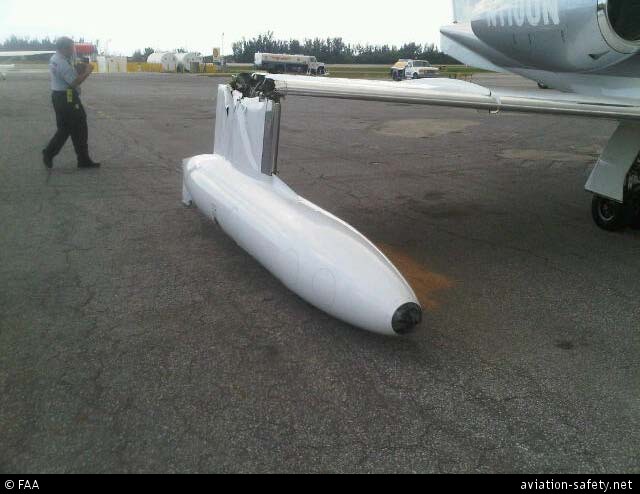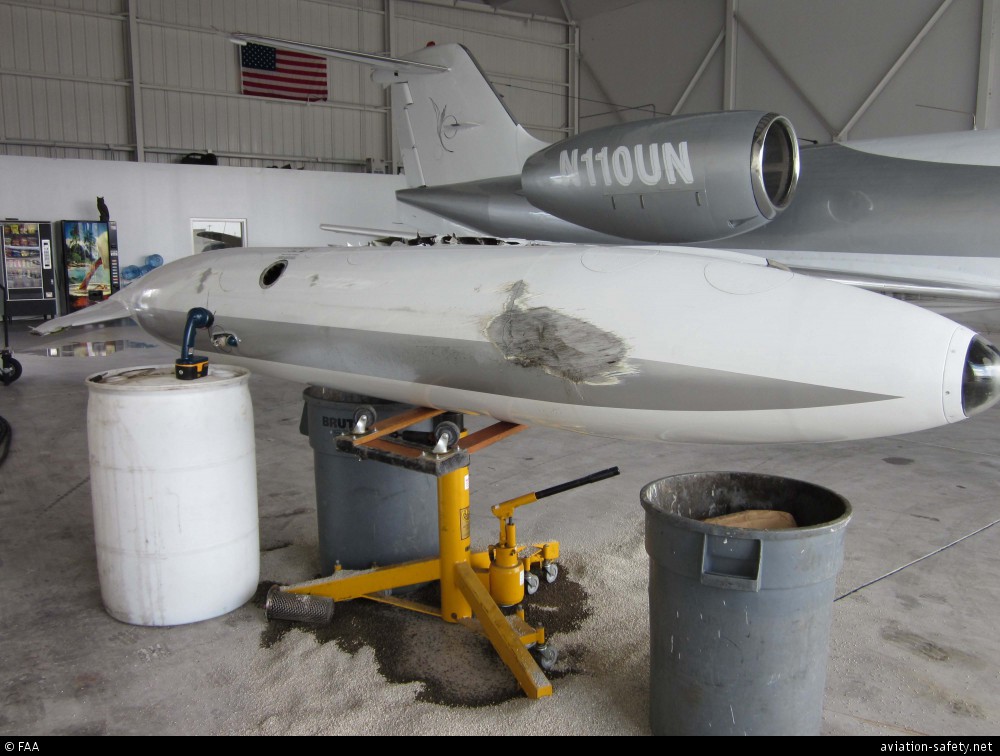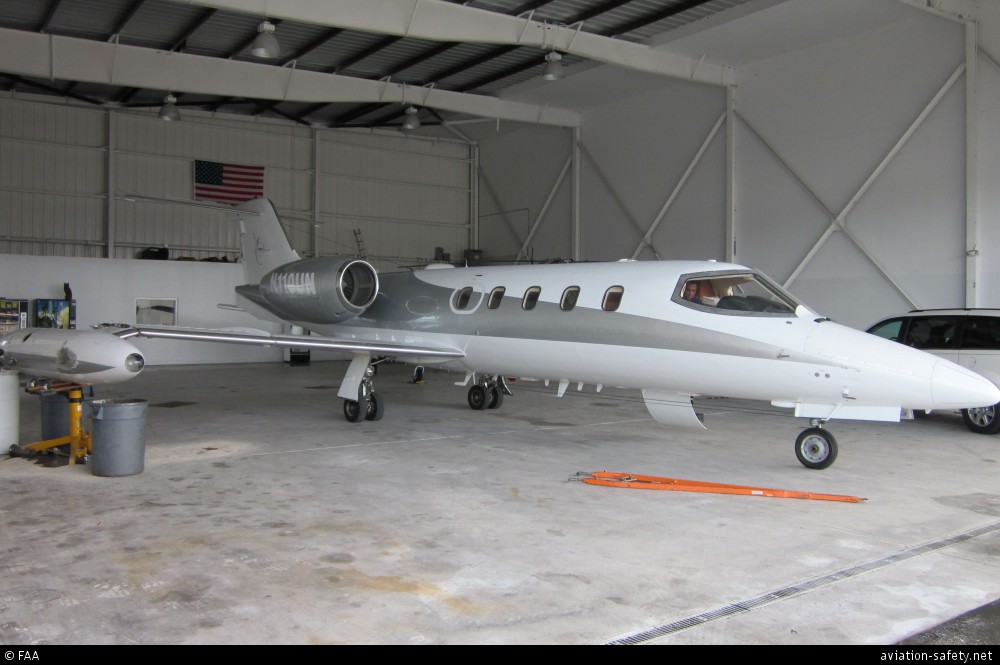
| Date: | Tuesday 12 July 2011 |
| Time: | 13:20 |
| Type: |  Learjet 35 |
| Owner/operator: | Robinson Air Crane, Inc. |
| Registration: | N110UN |
| MSN: | 35-007 |
| Year of manufacture: | 1975 |
| Total airframe hrs: | 19128 hours |
| Engine model: | Airesearch TFE731 SER |
| Fatalities: | Fatalities: 0 / Occupants: 4 |
| Aircraft damage: | Substantial, repaired |
| Category: | Accident |
| Location: | Opa-locka Executive Airport, FL (OPF) -
 United States of America United States of America
|
| Phase: | Landing |
| Nature: | Test |
| Departure airport: | Opa-locka Executive Airport, FL (OPF/KOPF) |
| Opa-locka Executive Airport, FL (OPF/KOPF) | |
| Investigating agency: | NTSB |
| Confidence Rating: |
A Learjet 35, N110UN, encountered windshear during landing at Opa-locka Executive Airport (OPF), Florida. The pilot, copilot, and two passengers were not injured. The airplane incurred substantial damage.
When the pilot made his initial radio contact with the tower air traffic controller, he acknowledged receiving the airports latest automatic terminal information service information. As the airplane approached the airport, the controller made several announcements that there was an area of weather about 5 miles in diameter with light-to-moderate precipitation over the airport. The pilot reported that, during the landing, at an altitude of about 30 feet above the runway, the airplane encountered windshear. The airplane started to roll to the left, and the airspeed decreased by 20 knots. As the pilot attempted to regain control of the airplane, the right wingtip contacted the runway surface. A review of high resolution automated surface observation system data from the airport indicated that, 2 minutes before the accident, the wind was from 338 degrees at 4 knots. Subsequently, there was a steady increase in wind velocity to 15 knots 4 minutes after the accident. During this 6 minute period, the wind direction varied between 353 degrees and 011 degrees. Terminal Doppler weather radar data indicated strong convective activity northwest of the airport from 2 minutes before to 10 minutes after the accident with possible micro bursts and diverging winds near the surface from the time of the accident to 5 minutes after the accident.
PROBABLE CAUSE: "The flightcrews inadvertent encounter with windshear during landing, which resulted in a loss of control."
Accident investigation:
 |
|
Sources:
NTSB
Location
Images:

photo (c) FAA; Opa-Locka Airport, FL (OPF); 12 July 2011; (publicdomain)

photo (c) FAA; Opa-Locka Airport, FL (OPF); July 2011; (publicdomain)

photo (c) FAA; Opa-Locka Airport, FL (OPF); July 2011; (publicdomain)
Revision history:
| Date/time | Contributor | Updates |
|---|
The Aviation Safety Network is an exclusive service provided by:


 ©2024 Flight Safety Foundation
©2024 Flight Safety Foundation